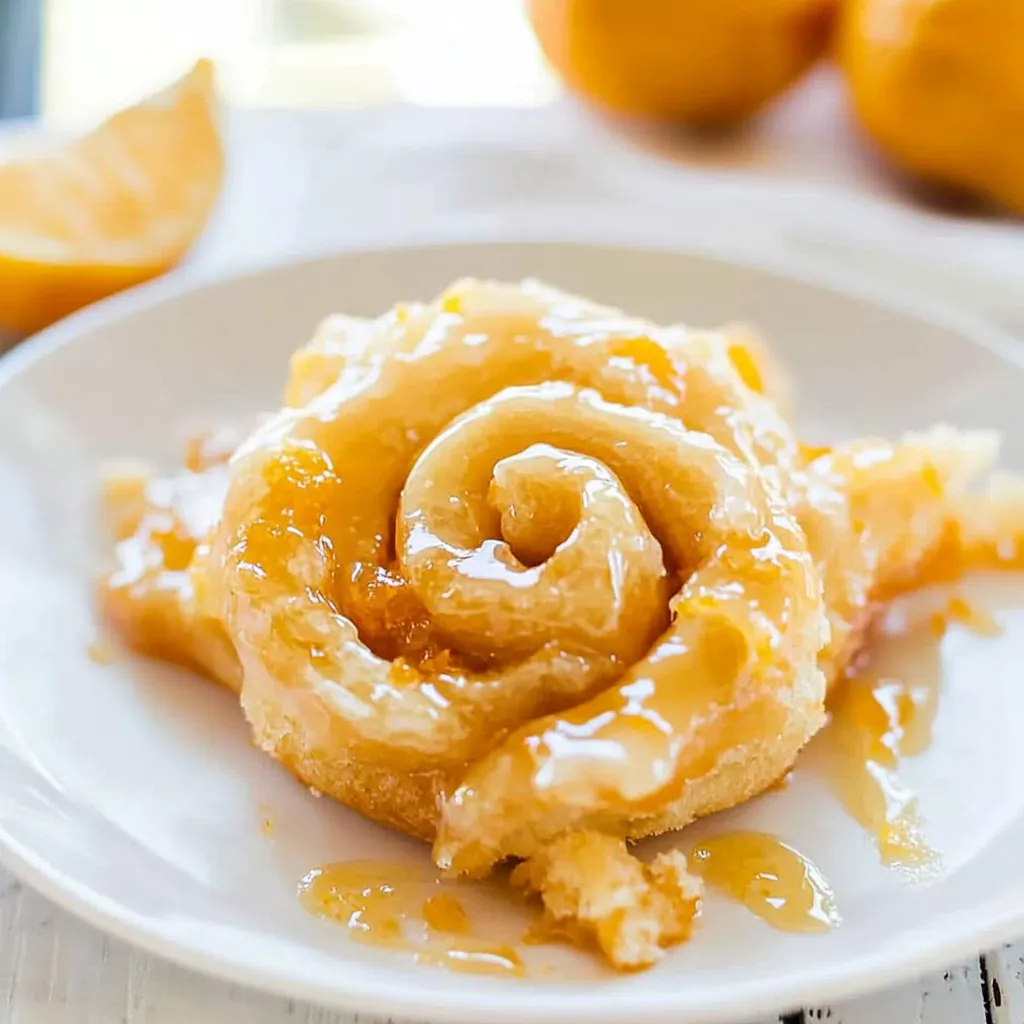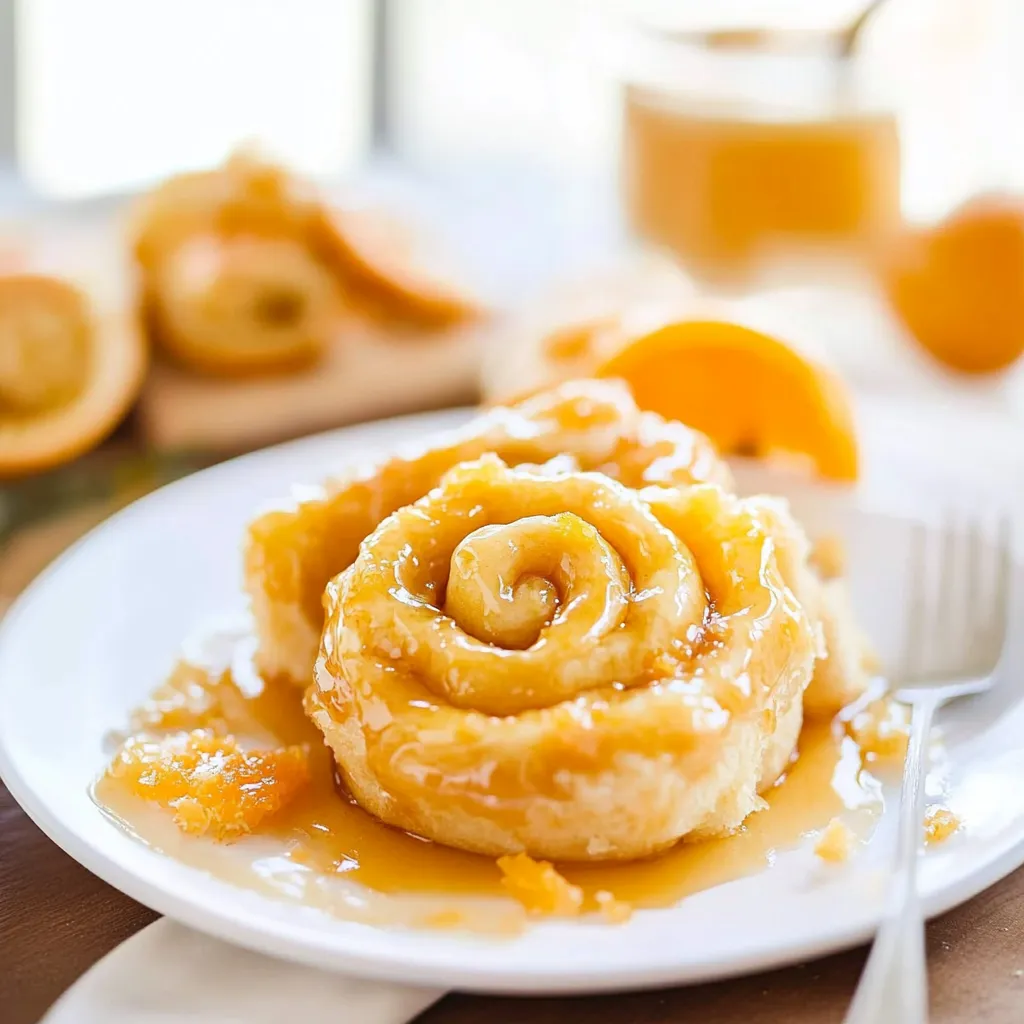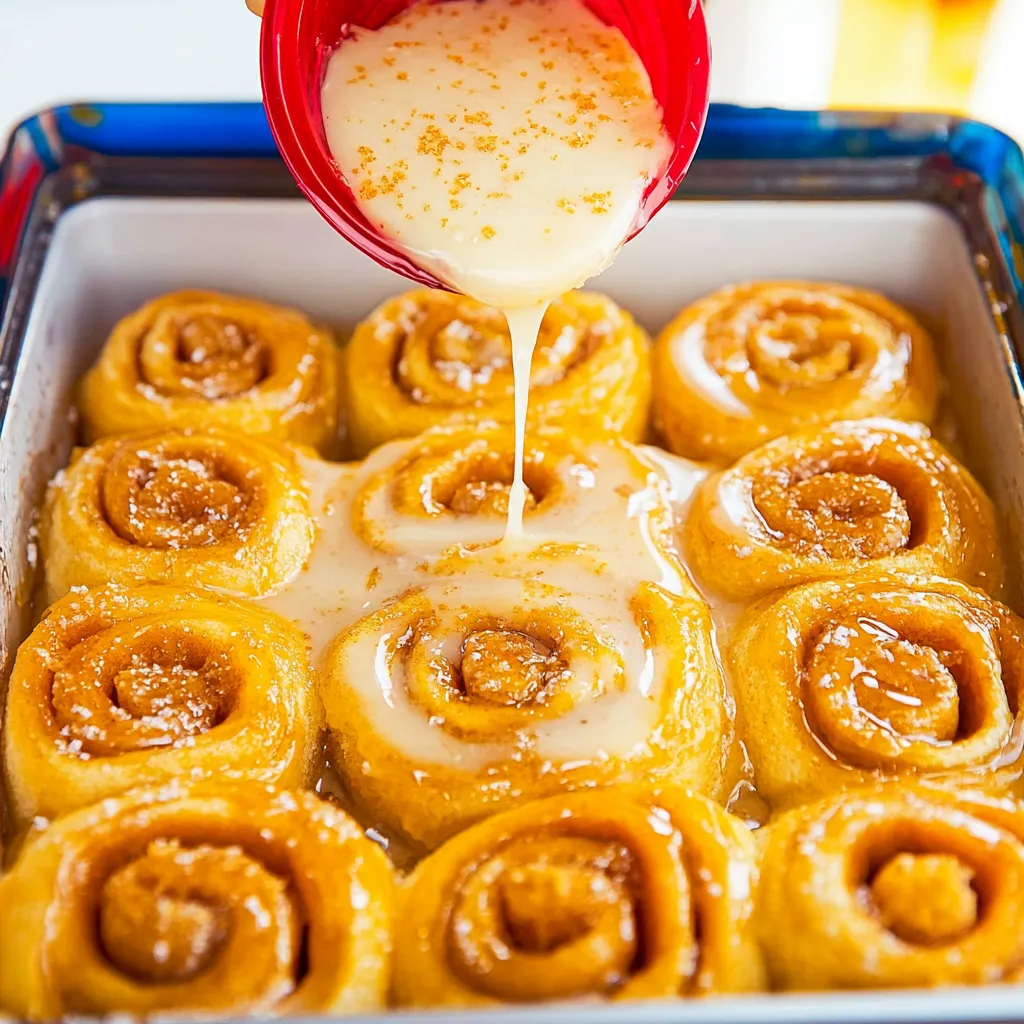 Pin it
Pin it
Citrus-infused rolls packed with zesty orange goodness transform regular mornings into memorable events. These fluffy swirls deliver just the right sweetness with bright citrus hints, all wrapped in soft yeast dough that just melts as you eat.
I stumbled upon this method while trying to find something different than regular cinnamon buns. Now my folks ask for these orange treats at every family breakfast. When my kitchen starts smelling like fresh oranges, everyone knows something special is happening - way better than checking the calendar.
Essential Dough Elements
- All-purpose flour: Forms the base while staying tender. Go for unbleached kinds for slightly better taste and don't scoop straight from the bag as this packs it down and makes your rolls too dense.
- Granulated sugar: Helps the yeast work while adding just a touch of sweetness. We use just enough to complement the orange parts without going overboard.
- Instant yeast: Makes sure your dough rises nicely without extra steps. It mixes in quickly and starts working right away, making the whole process faster.
- Salt: Boosts flavor and keeps yeast in check for proper rising. Skip this and your rolls will taste flat and might puff up too fast, messing up the texture.
- Unsalted butter: Adds a rich feel and softness to the dough. The fat wraps around flour proteins, keeping the gluten in check for that perfect soft bite.
- Buttermilk: Brings a slight tang and makes the texture super soft. Its acid weakens gluten chains, so your rolls stay tender even after kneading.
- Eggs: Give structure, color, and richness. The proteins firm up while baking to support the airy texture, and the fat keeps everything moist.
Zesty Orange Filling
- Butter Application:
- Let butter soften until it spreads easily but isn't melted. Spread a thin, even layer across all the dough using a flat spatula. This makes a base that helps other ingredients stick while adding richness.
- Marmalade Distribution:
- Pick good orange marmalade with real peel bits for authentic taste. Heat it for a few seconds to make it easier to spread, then use the back of a spoon to cover the butter layer with smooth, even strokes.
- Brown Sugar Finishing:
- Scatter light brown sugar evenly on top, pressing gently so it sticks. The molasses in it brings caramel-like notes that work great with orange while creating that nice stickiness as it bakes.
- Rolling Technique:
- From the long side, roll the dough into a tight, even log while keeping steady pressure. Firmly pinch the final edge to close it completely. Good tension while rolling makes those beautiful swirls when cut.
Perfect Glaze
- Citrus Foundation:
- Squeeze oranges right into your measuring cup, catching any seeds. Fresh juice tastes way better than store-bought, with natural tartness that works great against the powdered sugar sweetness.
- Vanilla Enhancement:
- Add real vanilla to support the orange flavor without taking over. This ingredient connects the citrus and sweet elements while bringing depth to your glaze.
- Sugar Incorporation:
- Slowly whisk powdered sugar into your wet mix until smooth. Keep adding until you get a consistency that drips slowly off your whisk but stays white and visible when drizzled.
- Final Touches:
- Mix in a tiny bit of salt to make flavors pop. Add a splash of milk if needed to get the right thickness. Finish with fresh orange zest for bursts of citrus in every bite.
 Pin it
Pin it
My family really enjoys these rolls during winter when oranges are at their peak. My grandma, who hardly ever bakes anymore, asked me for this recipe after trying them at our Christmas gathering last year. She told me they reminded her of the orange rolls her mom used to make back in the 1940s.
Make-Ahead Method
These treats turn out best when you give them proper time to rise. For easy morning baking, do all steps through putting the cut rolls in your pan, then wrap tightly with plastic and stick them in the fridge overnight.
Different Citrus Options
Regular orange works perfectly, but you can play around with other citrus for different seasons. Try ruby grapefruit marmalade for a fancy twist with a slight bitter note that grown-ups really like.
Keeping Them Fresh
Keep fully cooled rolls under a cake cover or in a sealed container at room temp for best texture up to three days. Don't put them in the fridge as this makes them get stale faster because of what happens to the starches.
 Pin it
Pin it
These orange rolls show what's truly wonderful about baking at home. There are several steps but anyone can make them, whatever their skill level. Turning basic ingredients into an amazing breakfast centerpiece feels so rewarding beyond just how good they taste. When I bring these orange treats to the table, the looks on everyone's faces after their first bite always reminds me that sometimes the best gifts come right from our kitchens.
Frequently Asked Questions
- → How can I prep these rolls in advance?
- You can cut the rolls, refrigerate them before the last rise, then let them sit out for an hour to rise before baking.
- → Is it okay to freeze baked orange rolls?
- Absolutely! Freeze without the glaze, then thaw and add fresh glaze before serving for up to 6 months.
- → Why should I use floss to cut the rolls?
- Floss keeps the dough nice and round, unlike a knife that could squash the rolls.
- → Can I replace instant yeast with active dry yeast?
- Yes, proof the yeast in warm liquid first and expect slightly longer rising times.
- → What can I use if I’m out of buttermilk?
- Stir 1½ teaspoons of lemon juice or vinegar into ½ cup of milk and let it sit for 10 minutes.
